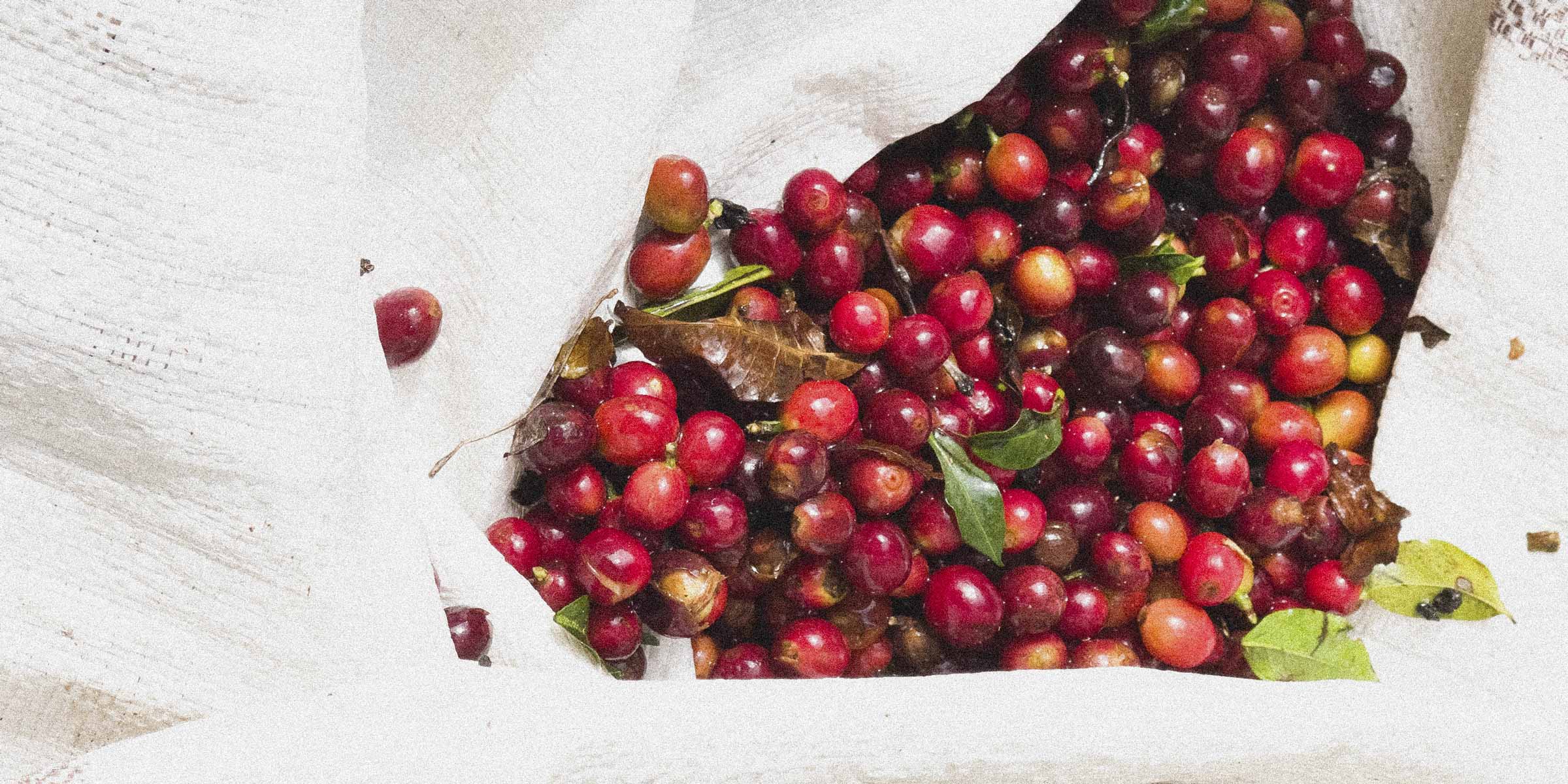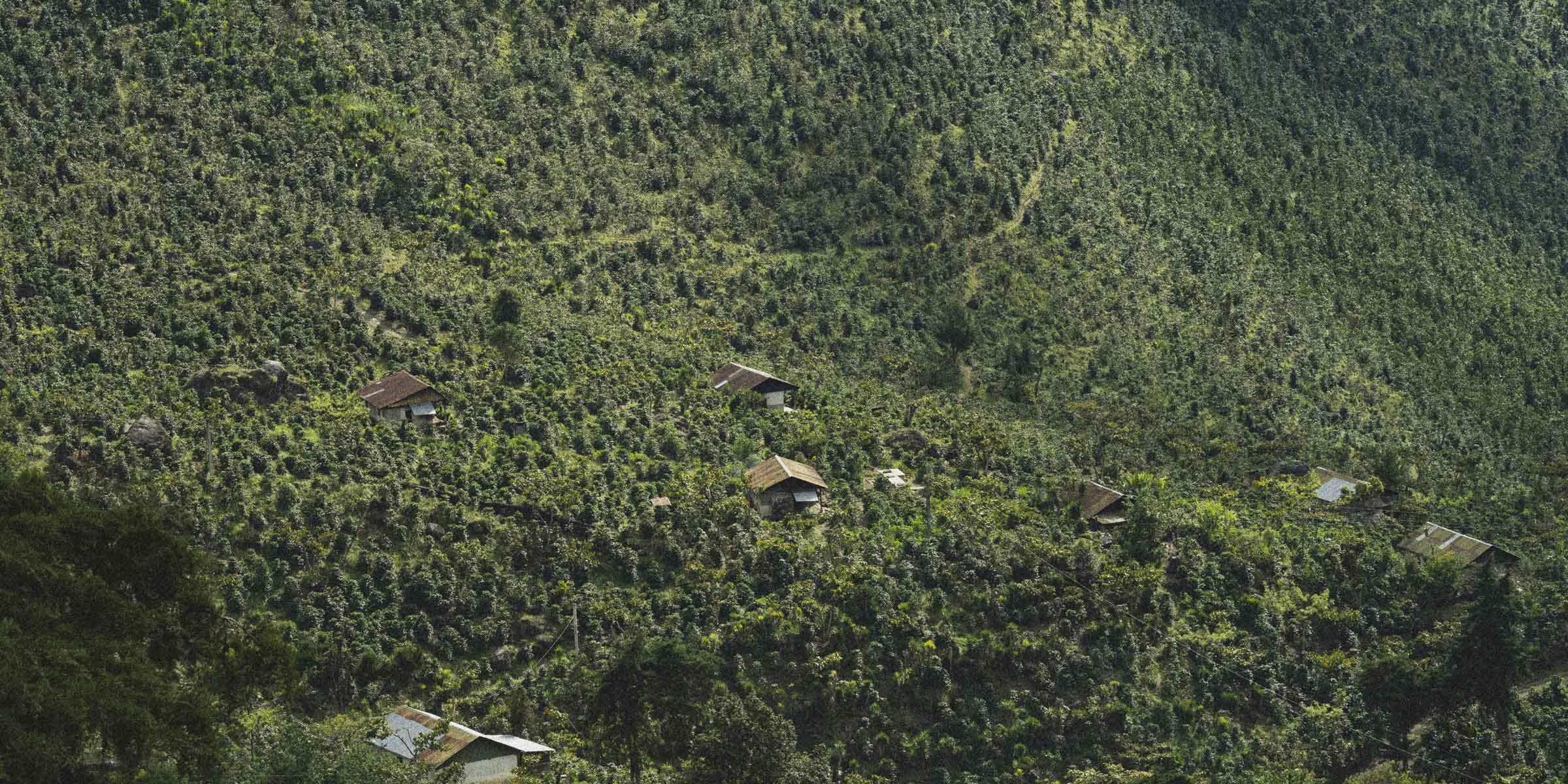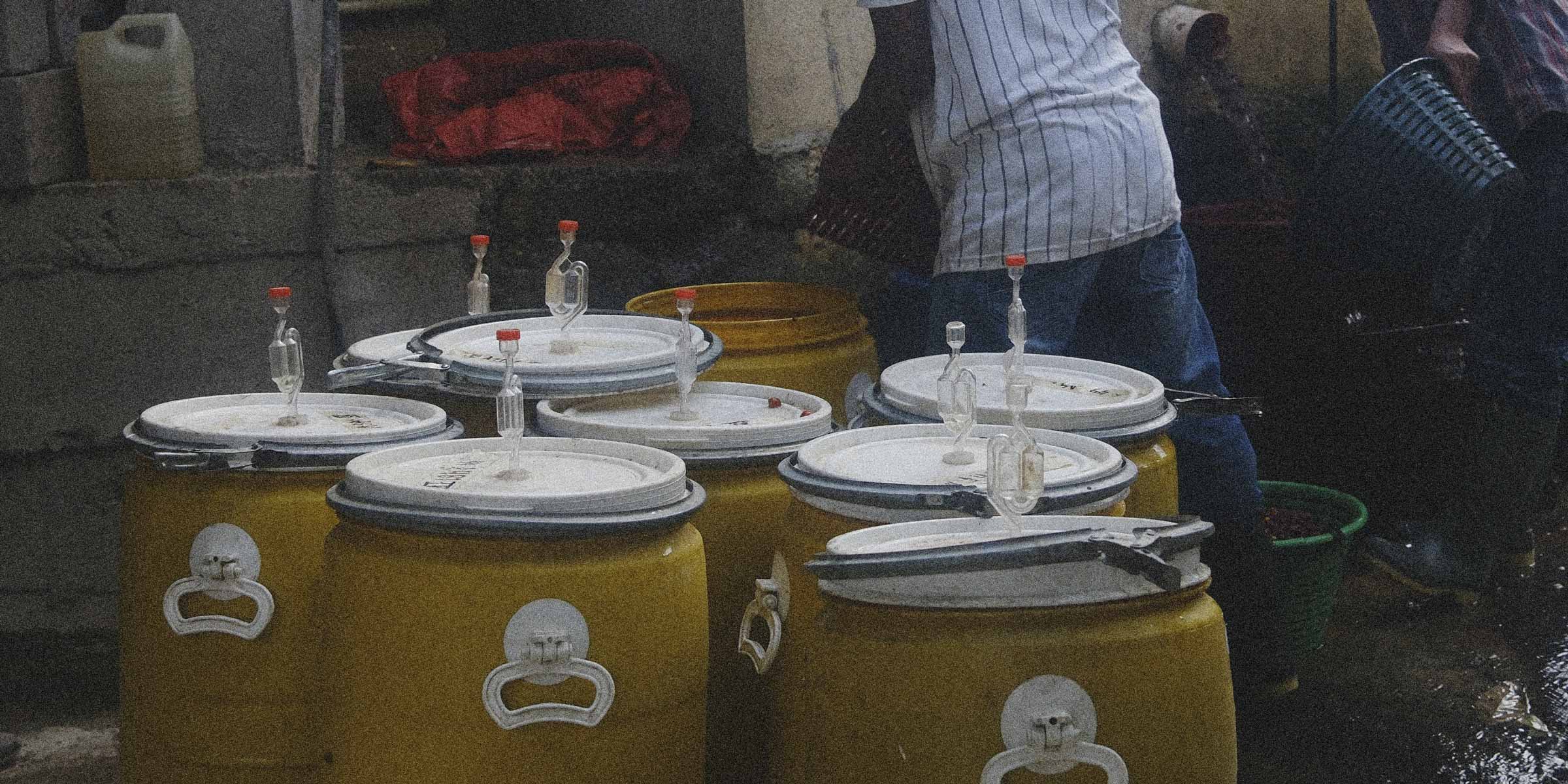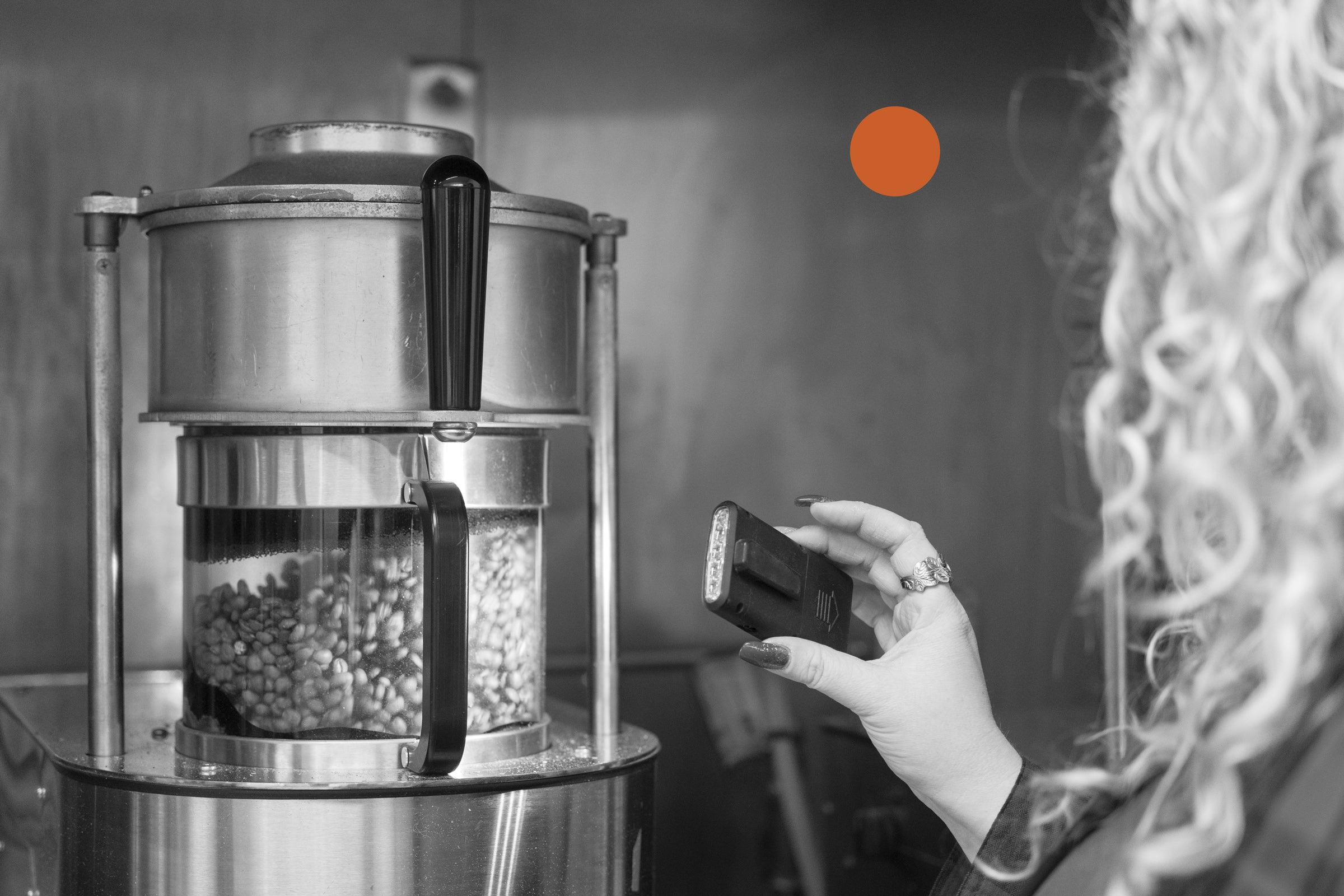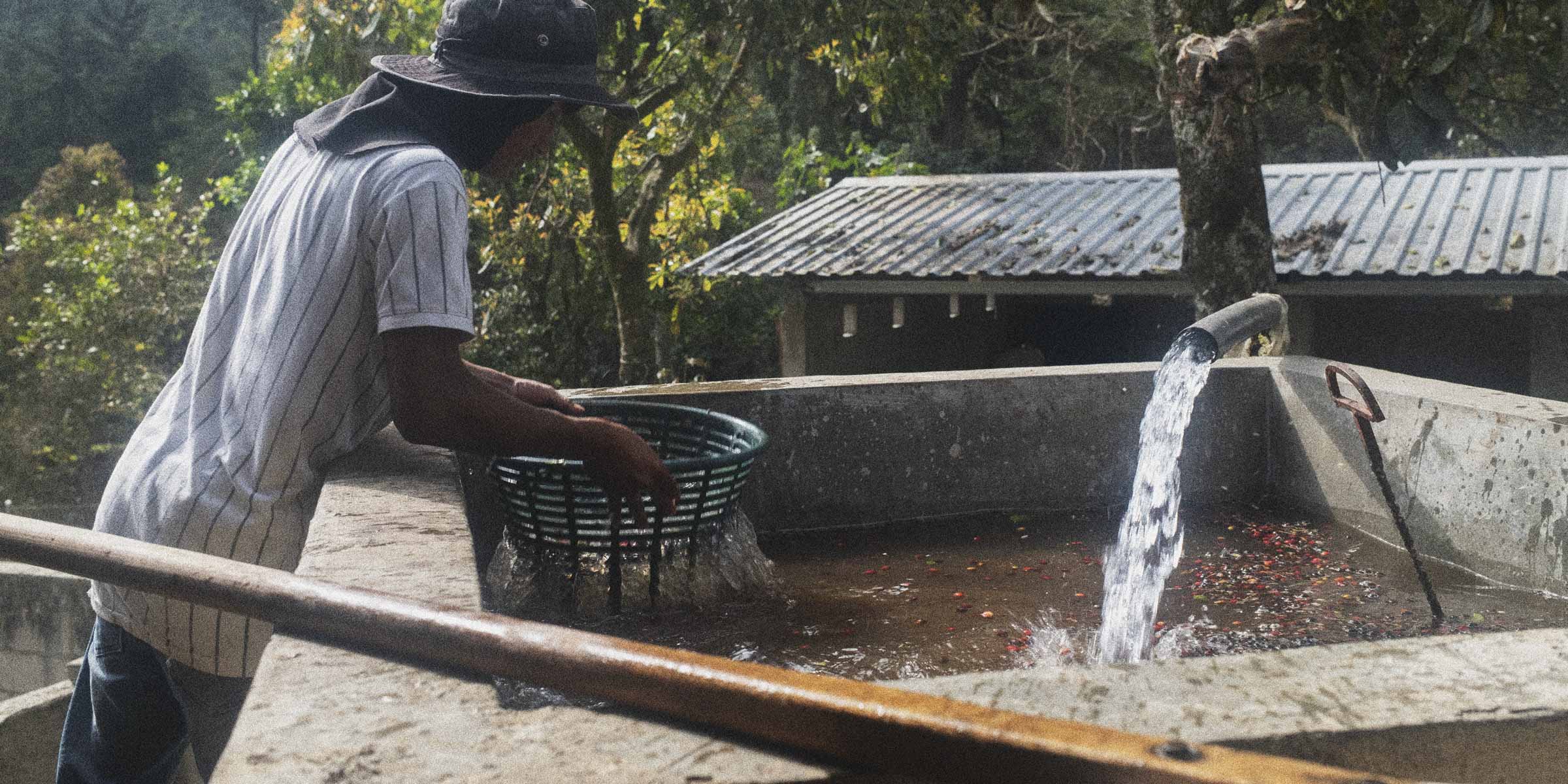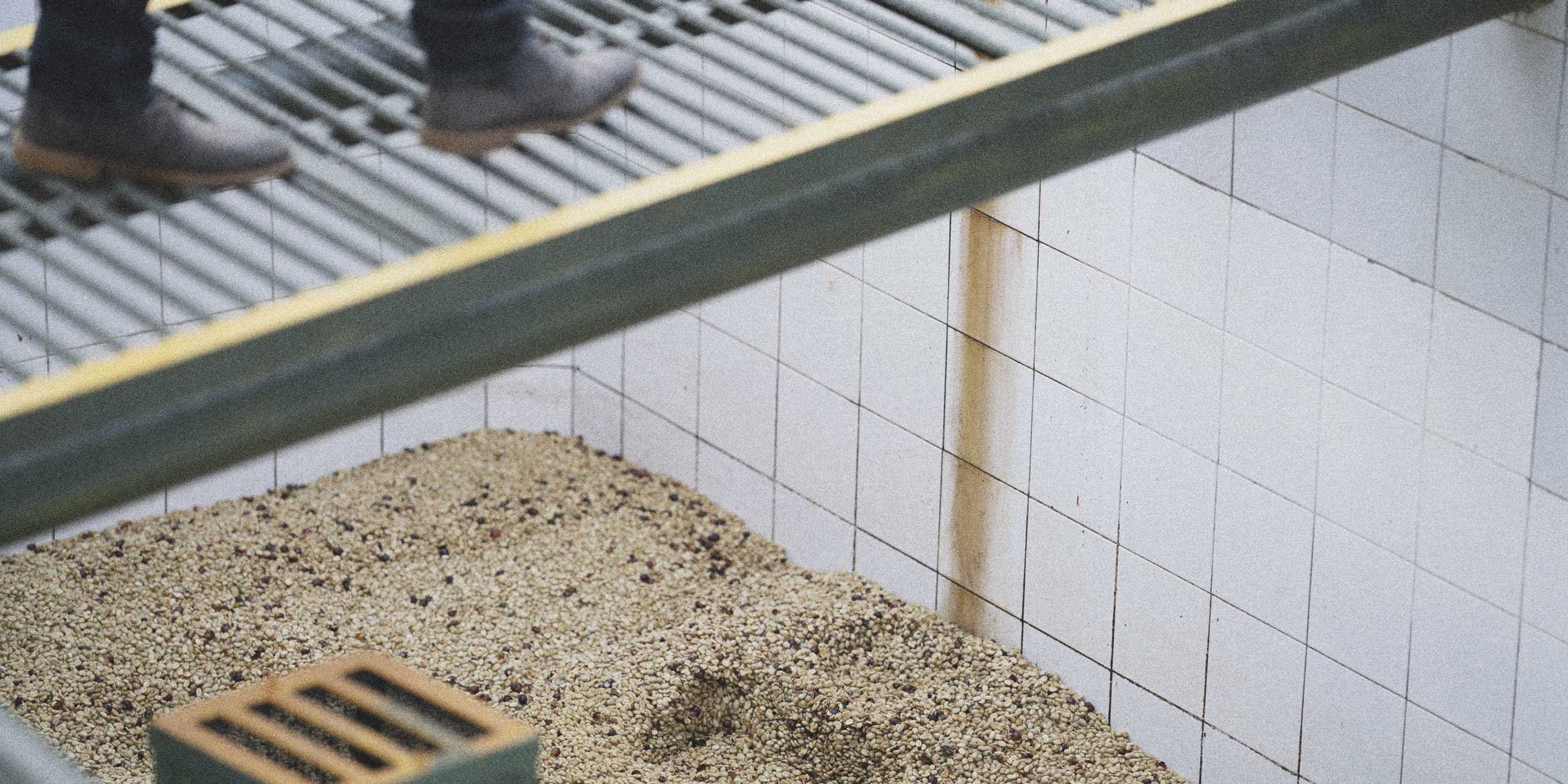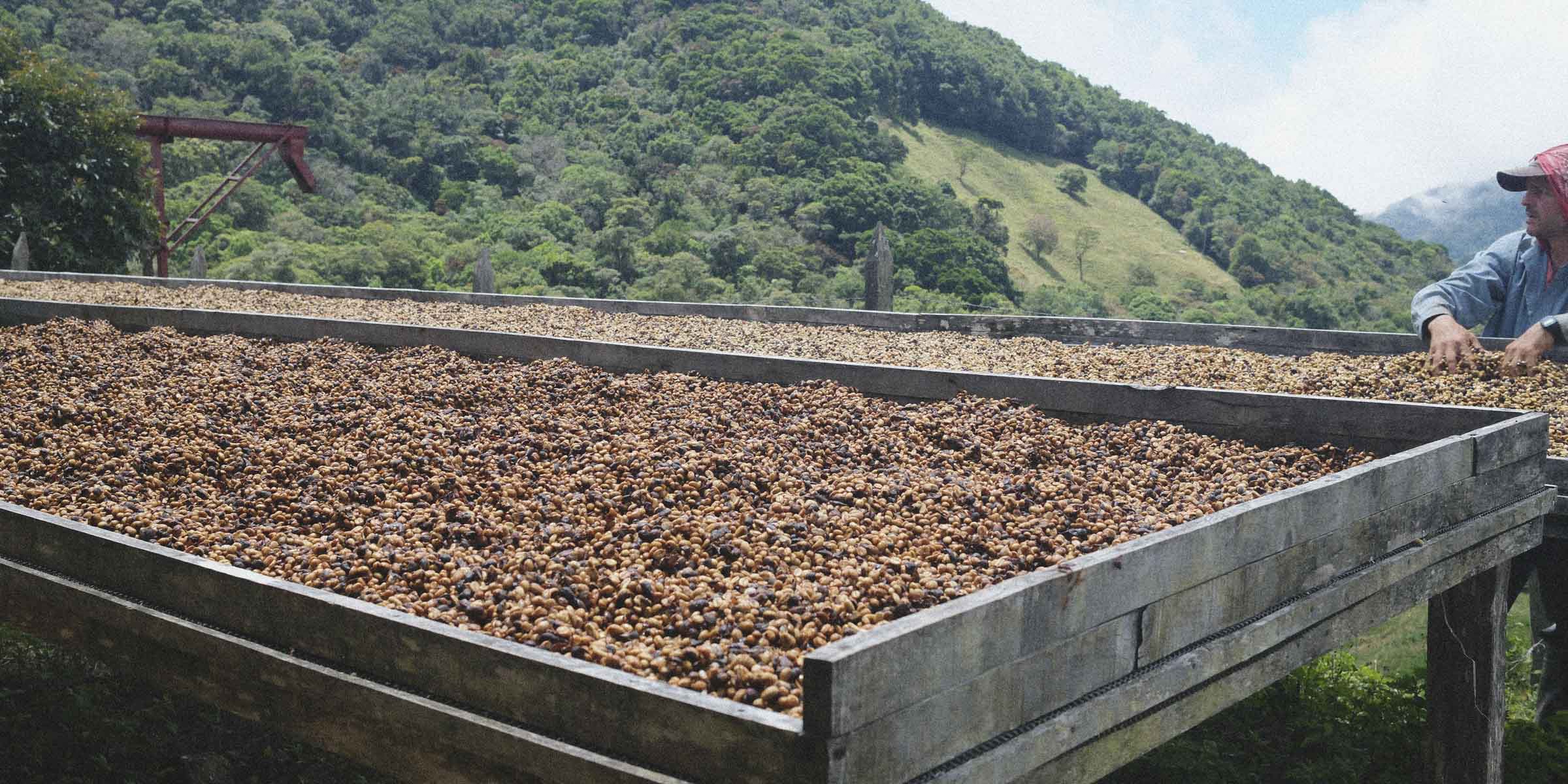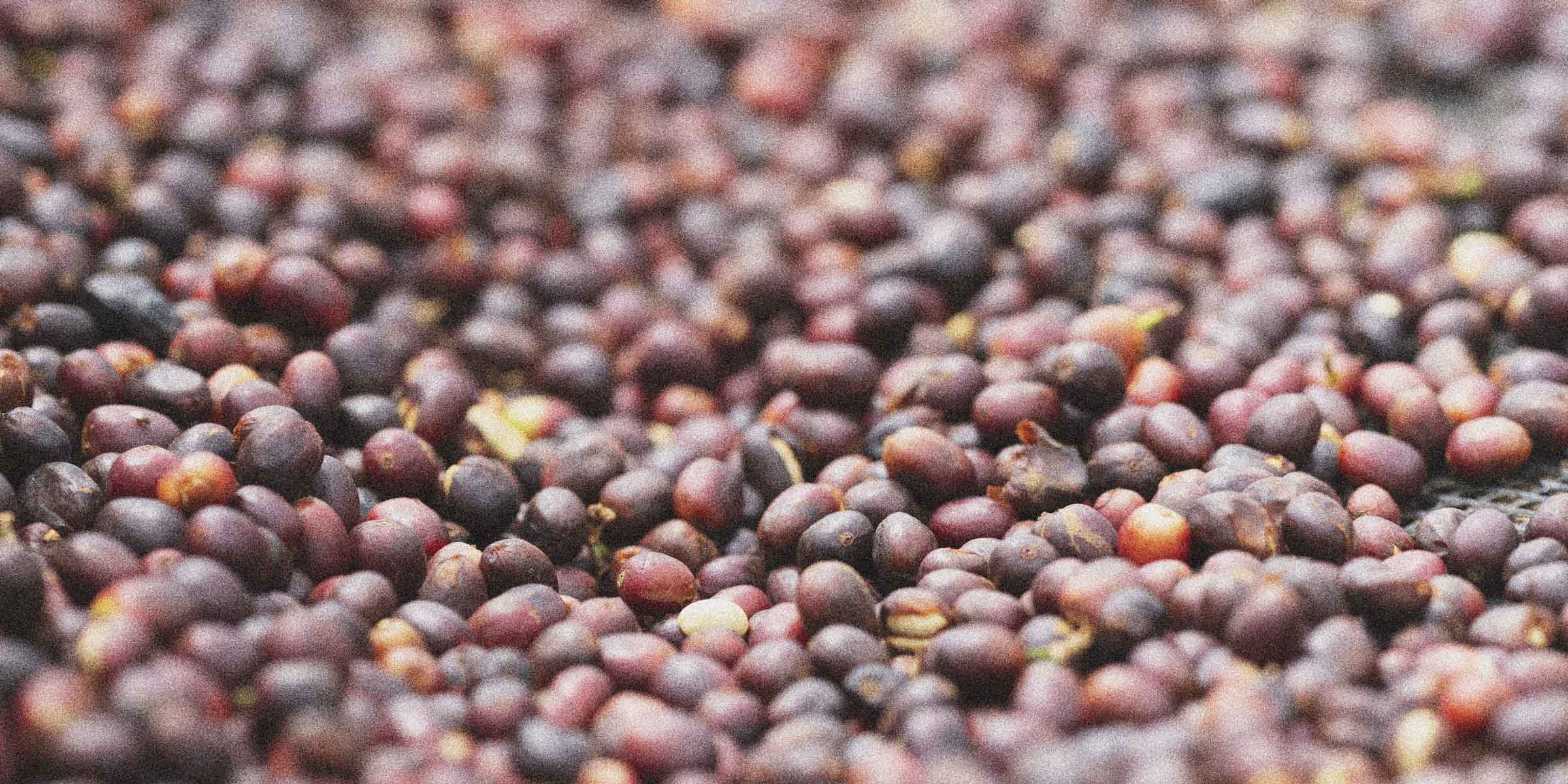Start with the basics •
Read our coffee 101 articleCoffee Processing Guide: Harvest, Threats & Methods
Picking
Most commercial grade coffee is "strip picked"–meaning, all the cherries are stripped from the branch at once, mixing ripe and unripe cherries. This saves a ton of time and labor, but obviously results in inconsistent quality.
Specialty coffee, on the other hand, is "hand picked"–meaning, only the ripest cherries are selected by hand, often over multiple passes throughout the harvest season. This method is much more expensive and labor-intensive, but results in a cleaner, more flavorful, higher quality cup of coffee. The difference between these two in terms of quality is enormous.
Sorting
Once coffee cherries are picked, they're brought to a processing mill. Essentially, the mill's job is to extract the beans from the cherry and then process them before packaging them as the green coffee beans we roast to make coffee.
But before any of that, the cherries have to be sorted. Mills that care about high-quality coffee take this step very seriously.
This process is just like it sounds: the good coffee cherries are separated out from the bad ones, just as was done in hand-picking. Sorters at these mills are looking for quality factors like ripeness, size, and appearance. A common test in sorting is the float test, where the cherries are immersed in water and any coffee cherries that float are thrown out. Floating indicates that the cherry has a defect—usually one that has caused it to lose density.
But what would cause these defects.
Coffee Borer Beetle
Like a small spark can lead to a raging wildfire, the coffee borer beetle (or, coffee weevil), while tiny (1.5-2 mm long), is considered the most dangerous insect pest of coffee crops worldwide.
Female borer beetles burrow into the coffee cherry and lay eggs inside. When the larvae hatch, they eat the coffee bean from the inside, resulting in partially hollowed out and damaged beans.
In a severe infestation, these beetles can destroy up to 80% of a crop. In 2023 alone, these tiny little terrors cost the global coffee industry over $1 billion.
They are basically the termites of the coffee world and, like termites, they are hard to kill–especially once they make it inside the coffee bean. Farmers combat this threat in a variety of ways: from pesticides to biological control to trying new, beetle-resistant varieties.
But being as they exist in nearly every coffee-producing country, this is a threat farmers have to take seriously. This is also why sorting at mills is so crucial. If a mill doesn't do the float test to check for the loss of density, a whole lot of coffee might be processed and end up tasting terribly.
However, not every threat to coffee quality can be removed through sorting.
Coffee Leaf Rust
Some kinds of fungus are great for you. Mushrooms. Yeast. Penicillin.
Coffee leaf rust, however, is not. One of the most devastating diseases for coffee crops worldwide, it's caused by the fungus Hemileia vastatrix. Spores are released into the air, hitching a ride on anything that moves–wind, rain, even people–before landing on a leaf and beginning its assault.
As the fungus infects the leaf, it begins to grow inside of it, stealing nutrients and damaging its cells. After a couple weeks, it forms pustules (or, spore factories capable of holding up to 150,000 new spores) which push up through the leaf's surface, appearing as orange or yellow powdery spots. These pustules eventually burst, unleashing a new generation of leaf-killing fungi into the surrounding area. With no nutrients, damaged tissue, and disrupted photosynthesis, the leaf dies, turns brown, and falls off altogether. The more this fungus spreads, the less leaves the plants have to use for photosynthesis, the less coffee cherries it can produce.
In Colombia, from 2008-2011, coffee leaf rust caused a loss of coffee crop by 40%. In Latin America, from 2012-2017, a case of coffee leaf rust broke out that was so severe, it affected six countries, compromising 50% of coffee farms, and resulting in a 70% yield reduction in the worst hit areas. Coffee leaf rust is like if wildfire and glitter were combined—it's hard to contain, and once it's there, nearly impossible to get rid of.
While you may not have heard of this lethal disease, coffee farmers know it well. They take every precaution to prevent it, actively trying to grow new rust-resistant varieties and spraying fungicides where necessary.
To the farmers who grow it, coffee isn't just a crop—it's a fight against pests, disease, and uncertainty. Every good cup is a small victory.
Processing Methods
Once the cherries survive these threats and make it through sorting, they must be processed. Remember, coffee isn't really a bean. It's actually the seed of a fruit–specifically, a coffee cherry. The Coffea Arabica plant produces coffee cherries each year and it's the seeds from these cherries that become coffee "beans".
After sorting, cherries are processed in one of three main ways: washed, natural, or honey. Each method profoundly impacts the final taste.
Washed processing removes all fruit before drying for clean, bright flavors; natural processing dries cherries whole for fruity, wine-like complexity; and honey processing leaves varying amounts of sticky mucilage on the bean, creating a spectrum between the two. Each method manipulates fermentation differently, fundamentally shaping the coffee's final flavor profile.
The Impact on Your Cup
These processing decisions fundamentally shape what you taste. Washed coffees deliver clean, bright profiles. Naturals burst with fruit and body. Honeys balance both worlds. Combined with variety, elevation, and origin, processing completes the transformation from cherry to the coffee in your cup.
Coffee producers make these choices every day so that your coffee is delicious. So the next time you sip your favorite brew, remember: it's not just a cup—it's a story of resilience, careful selection, and processing decisions that began long before the beans reached your grinder.
The Coffee Journey
Explore all that goes into your morning cup
